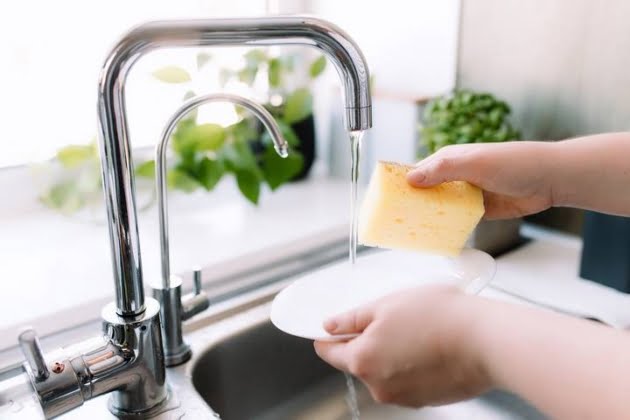What’s the most important room in your house? For most people, it is the kitchen. This is where we prepare delicious meals every day. In order for the kitchen to run smoothly, all appliances and plumbing fixtures must be in working order. This includes the kitchen sink, a reliable water source that we use for cooking, drinking, and cleaning up.
Many people don’t realize how much they use their kitchen sinks, taking the water source for granted. However, a lot of our daily tasks would be affected if the sink is not working properly. This is especially true when you encounter low water pressure in the kitchen sink. If you need to wash or rinse dishes, you will feel very troubled over not having enough water pressure in the kitchen.
Low water pressure is a frustrating problem that will persist in the long term, so you should get it fixed by a plumber as soon as possible. But why is the water pressure low in a kitchen sink and dishwasher? There are usually some common culprits that steal the water pressure from the sink. Let’s go over the most likely reasons for low water pressure in a kitchen sink:
Water Line Break
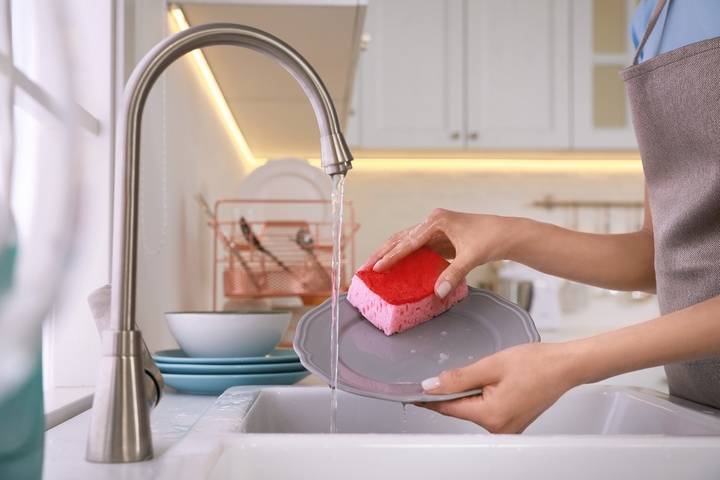
If you have low water pressure in your kitchen, you should check all the other water sources in your home for low pressure as well. Start by eliminating different taps until you find out where the problem is coming from. If the low water pressure has affected all the sinks in your home, then there may be a cracked water line.
A broken water line is common, but this problem can be hard to detect. The best way to get confirmation is to take a meter reading. This is done by shutting off all faucets, taking the meter reading, and waiting for four hours to do another reading. If there is a change in the water pressure, then you probably have a line break. You will need to call plumbing services to find and repair the leak.
Faucet Aerator
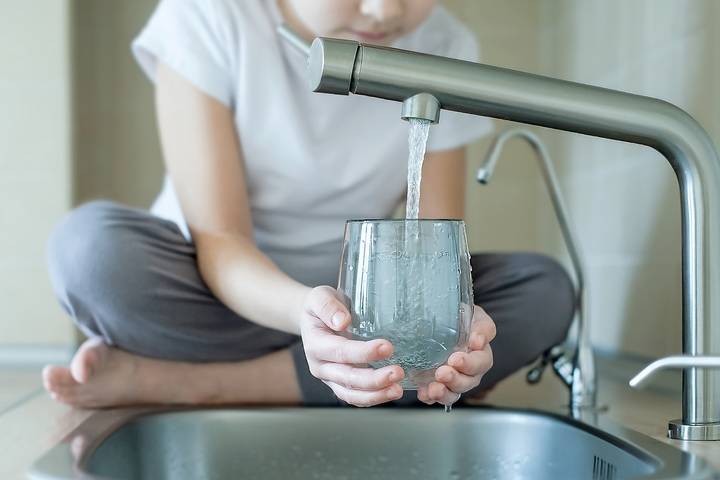
If your low water pressure is just limited to your kitchen sink, then the problem could be your aerator. This is a mechanism that regulates the flow rate of water through your tap. Located at the end of the faucet, this device can get plugged from a build-up of debris and minerals in the water. As it gets clogged, you will experience low water pressure in the kitchen sink only.
You can clean this up pretty easily by removing the end of the tap, then using an old toothbrush to scrub it. Soaking the faucet aerator overnight also helps to loosen up any particles. If the damage is too far gone, you can replace it with another faucet aerator at your local kitchen and supply store.
Faucet Cartridge
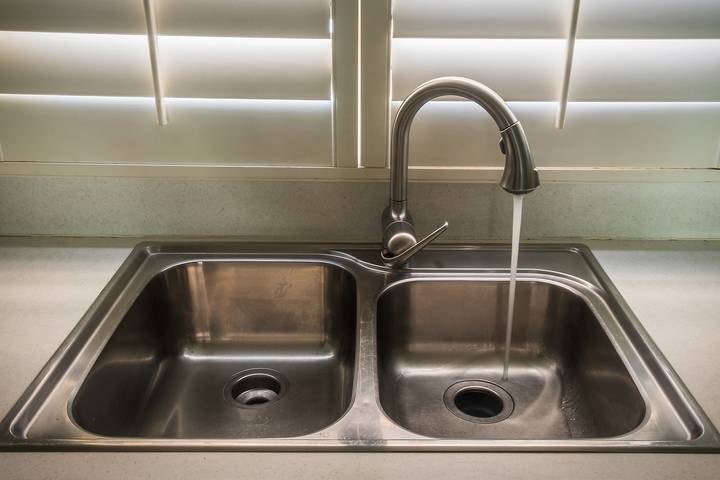
Your faucet cartridge is another device used to control the flow of water in your kitchen sink. Your taps are connected to the cartridge with a valve that opens and closes as you turn your faucet. This too can get clogged with debris. You will be able to clean it up with a good scrubbing and a vinegar soak overnight.
However, a faucet cartridge can be difficult to dismantle and clean, so it is recommended that you consult a plumbing service for help. If there are too many sediments or the cartridge is rusted, you will need to find a replacement.
Water Leaks

Low water pressure may be the result of a persistent leak elsewhere in your plumbing supply. Examine the other sinks and faucets in your household. Look for leaking on both the inside and the outside. Any leaks can impact the water pressure for the entire house. Also, check your toilets as they might be leaking or have water running continuously. The issue may be as simple as the float or the flapper that is causing the leak.
Shut-Off Valve
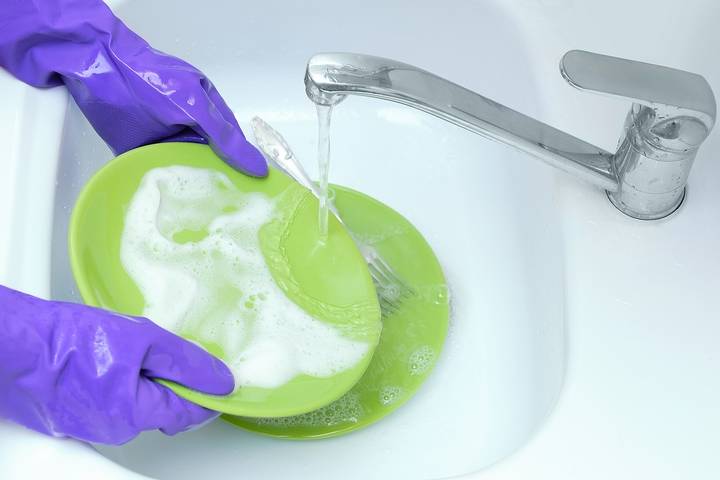
Further down the water line under your sink, you will find the water shut-off valve. This completely shuts off the flow to your cold and hot water. Normally, you don’t often touch these valves unless you are changing your taps. Some homeowners may turn them off if they want to ensure there are no water leaking issues when travelling for an extended period.
Check to make sure the shut-off valves are fully open, as this could be the problem with the low water pressure in a kitchen sink. Mineral deposits build up over time and can clog the system too. Also, washers may break down and cause leaks. Check for any sitting water on the bottom of the cupboard. To replace them is a big job, so you will likely need to contact the professionals.
Pressure Regulator
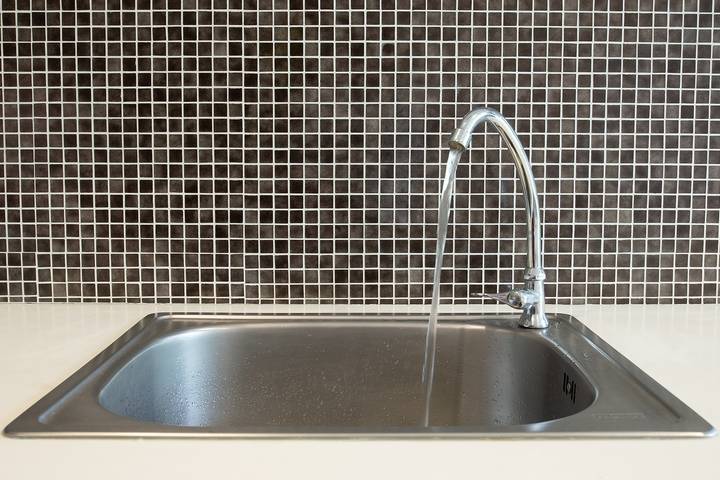
Your pressure regulator or pressure reducing valve is connected to the water line where it first comes into your house. This regulator is pre-set and usually doesn’t get touched by a homeowner. You can check to see if the pressure regulator is turned open and inspect it for any damage.
If you notice wear-and-tear, call a qualified plumber for their expertise. Once the issue is resolved, you can go back to accessing your kitchen sink with a regular amount of water pressure. Lots of water pressure in your kitchen sink is sure to take the pressure off cleaning up after dinner!



